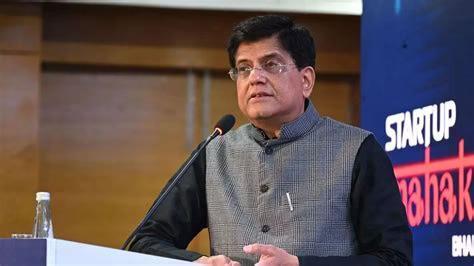
Indian Brands Go Global: Competing on Design & Quality
In recent years, Indian brands have been making significant inroads into the global market, competing fiercely with international players on the grounds of design, quality, and innovation. Gone are the days when India was only a destination for foreign brands looking to tap into the country’s massive consumer market. Today, Indian brands are confidently exporting their own products and services, backed by strong manufacturing capabilities and strategic marketing efforts.
As perceptions about Indian brands have shifted, businesses are building brand equity abroad, establishing themselves as serious global contenders in various industries. From consumer goods to technology, Indian brands are making a mark, and their success stories are inspiring others to follow suit.
According to a recent report, Indian brands are winning on design, quality, and competitiveness globally. In an interview with The Core, Dheeraj Sinha, CEO of FCB India, emphasized that Indian brands are no longer just competing on price but are instead focusing on creating unique value propositions that resonate with global consumers.
“The Indian brands are winning because they are focusing on design, quality, and innovation,” Sinha said. “They are not just competing on price; they are creating a unique value proposition that resonates with global consumers.”
Indeed, Indian brands have been making significant strides in recent years, thanks to a combination of factors. One of the key factors has been the country’s strong manufacturing capabilities, which has enabled Indian companies to produce high-quality products at competitive prices.
Take, for instance, the case of Tata Motors, which has become a major player in the global automotive industry. With a range of products that cater to different segments, Tata Motors has been able to establish itself as a serious competitor to international brands like Toyota and Ford.
Another example is Hindustan Unilever Limited (HUL), which has been a pioneer in the Indian consumer goods industry. With a portfolio of popular brands like Lipton, Lux, and Surf, HUL has been able to expand its presence globally, acquiring several international brands along the way.
Indian brands have also been successful in leveraging social media and digital marketing to reach a global audience. With a large and growing number of internet users, India has become an attractive market for global brands, and Indian companies are now using this platform to promote their products and services globally.
For instance, Indian e-commerce company Flipkart, which was acquired by Walmart in 2018, has been using digital marketing to promote its products globally. With a strong presence in India, Flipkart has been expanding its operations to other countries, including the Middle East and Southeast Asia.
Indian brands have also been successful in partnering with international companies to expand their global presence. For instance, Indian IT company Wipro has partnered with global companies like IBM and Accenture to deliver technology solutions to clients worldwide.
In addition, Indian brands have been investing heavily in research and development to create innovative products that meet the needs of global consumers. For instance, Indian pharmaceutical company Dr. Reddy’s Laboratories has been investing in R&D to create innovative medicines that cater to the needs of patients worldwide.
Another key factor behind Indian brands’ success has been their ability to adapt to changing consumer preferences and trends. With a large and diverse population, India has become an attractive market for global brands, and Indian companies are now using this platform to promote their products and services globally.
For instance, Indian fashion brand Fabindia has been successful in adapting to changing consumer preferences by offering a range of products that cater to different segments. With a strong presence in India, Fabindia has been expanding its operations to other countries, including the Middle East and Southeast Asia.
Indian brands have also been successful in leveraging their cultural heritage to promote their products and services globally. For instance, Indian jewelry brand Tanishq has been using its cultural heritage to promote its products globally. With a strong presence in India, Tanishq has been expanding its operations to other countries, including the Middle East and Southeast Asia.
In conclusion, Indian brands have been making significant strides in recent years, competing fiercely with international players on the grounds of design, quality, and innovation. With a strong manufacturing base, strategic marketing efforts, and a willingness to adapt to changing consumer preferences, Indian brands are now established as serious global contenders in various industries.
As the Indian economy continues to grow, it is likely that Indian brands will continue to expand their global presence, competing with international players for market share. With their focus on design, quality, and innovation, Indian brands are well-positioned to succeed in the global market, and their success stories are inspiring others to follow suit.






